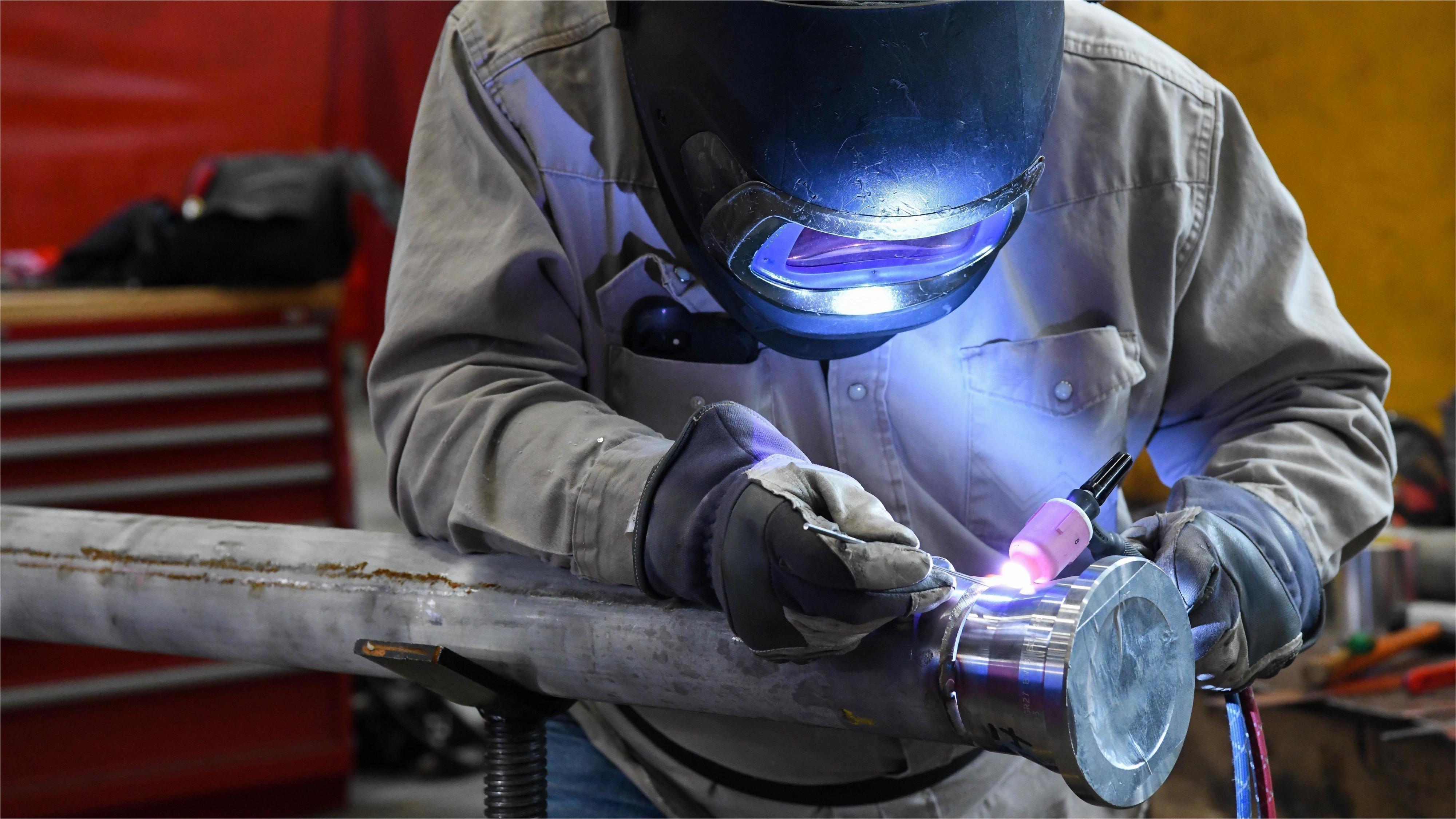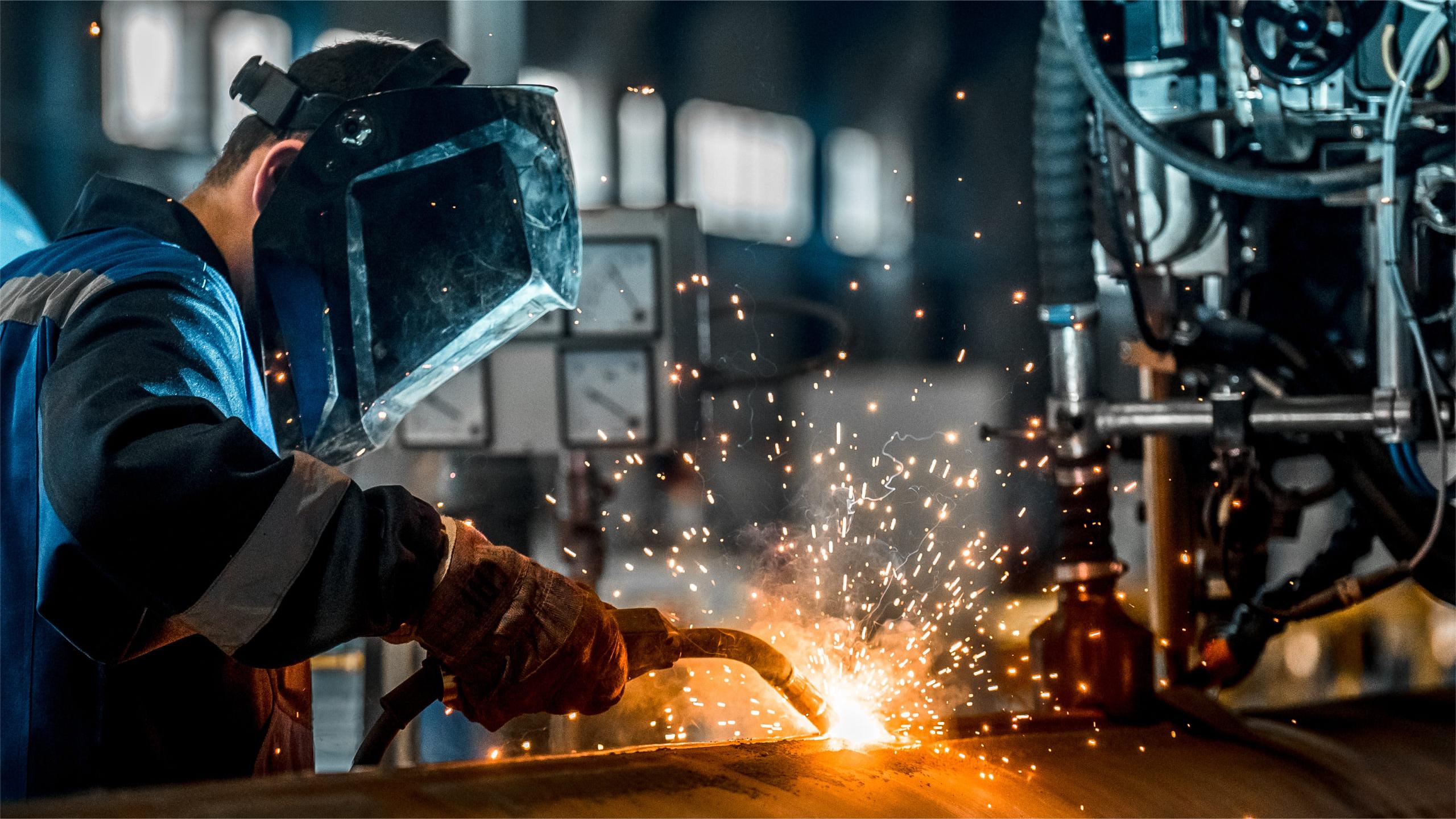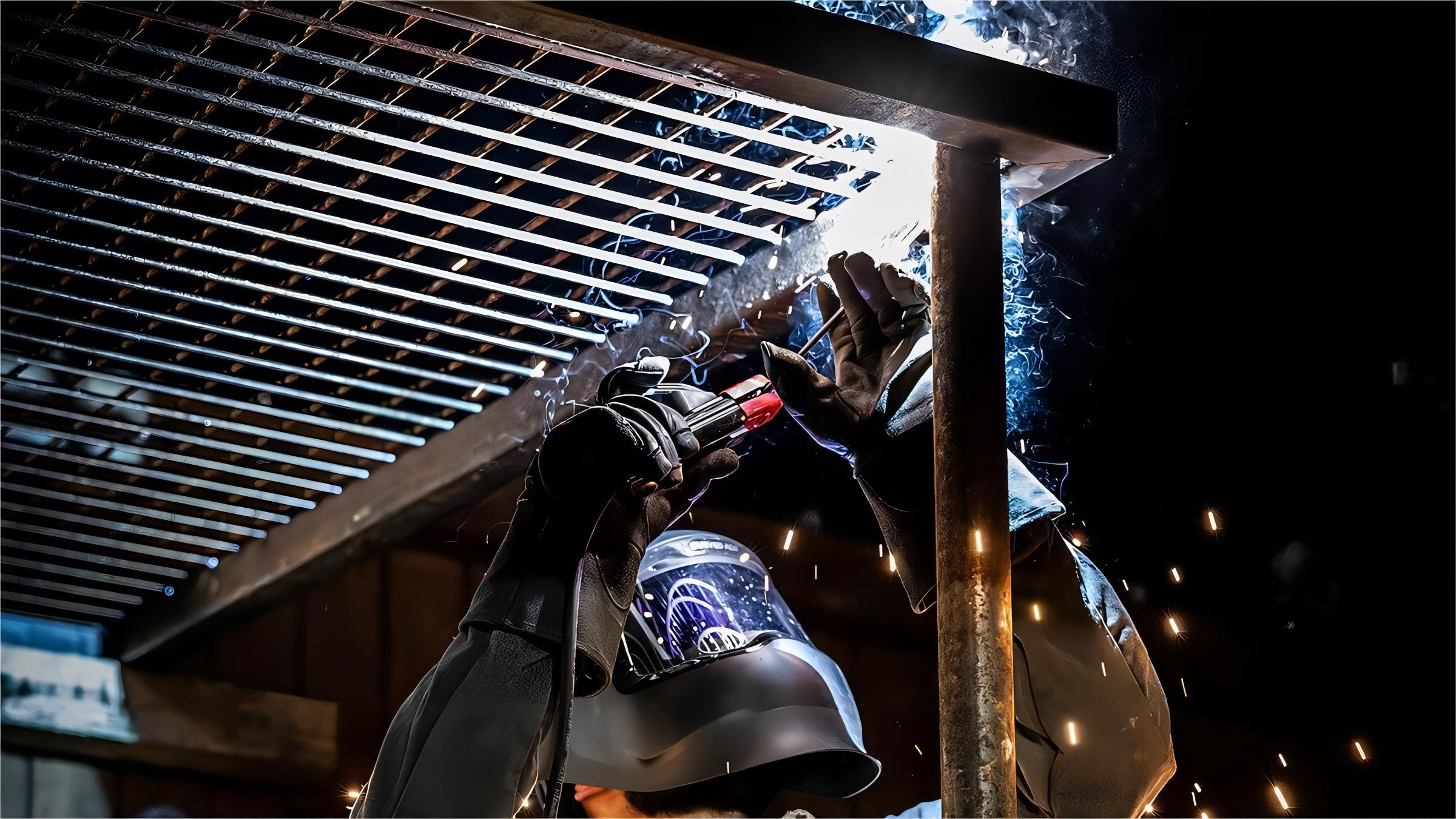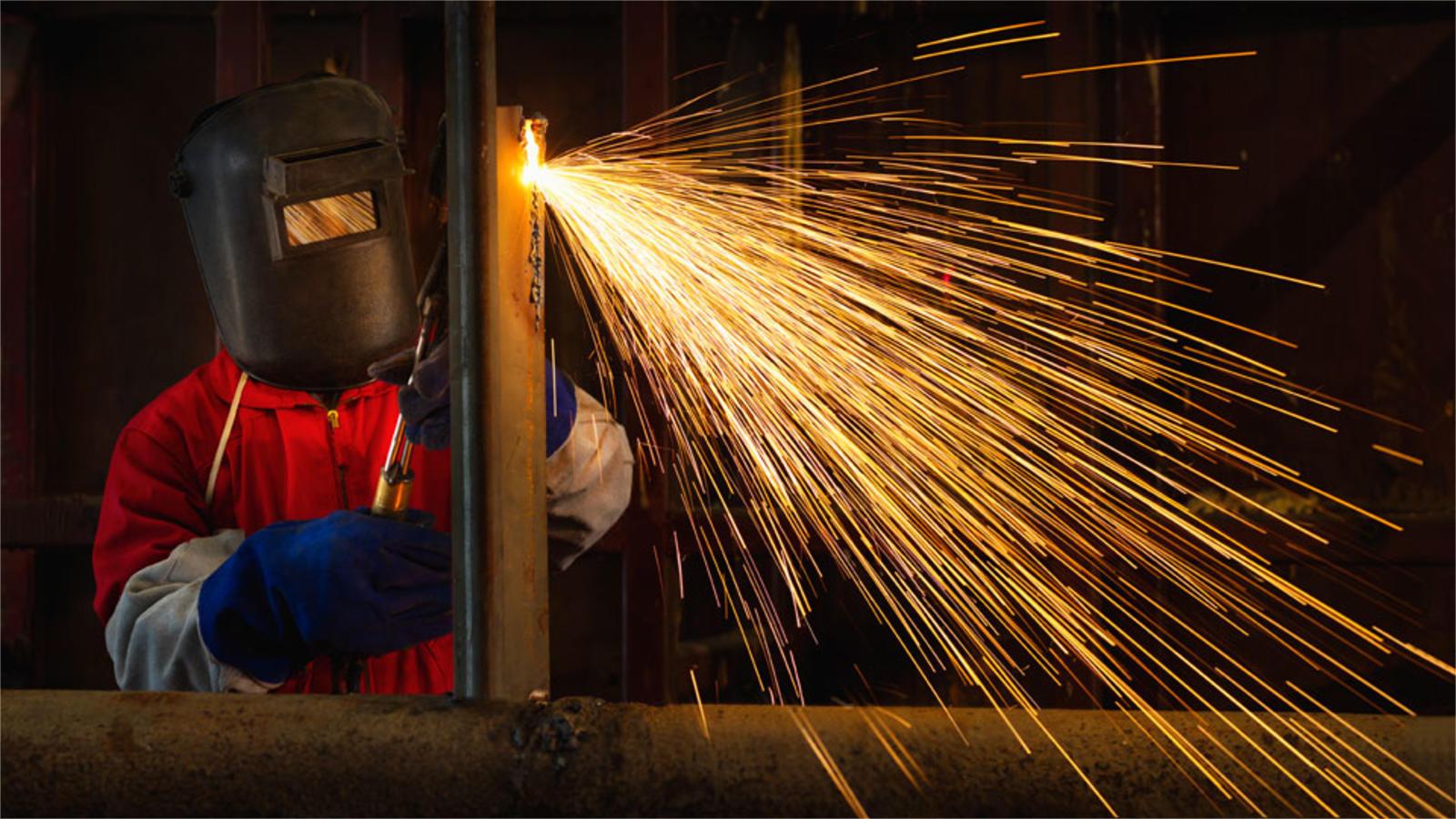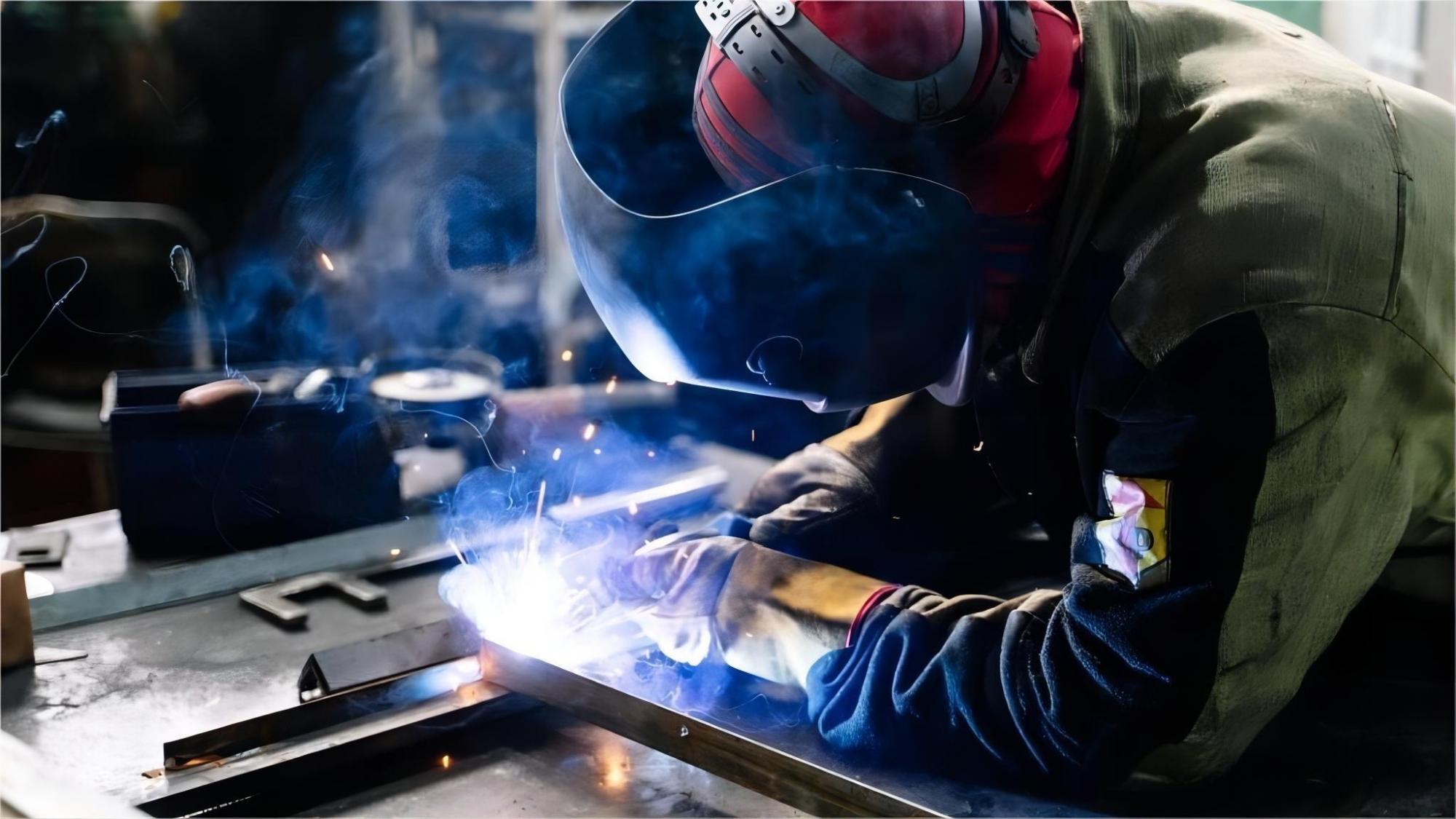Welding is a widely used process in various industries, such as construction, manufacturing, and automotive repair. While welding is an essential skill, it also involves potential hazards that can cause serious injuries if proper safety measures are not followed. This beginner’s guide aims to provide comprehensive information on welding safety, including personal protective equipment (PPE), safe work practices, and potential hazards to be aware of.
Why Is Safety Important in Welding?
Safety is of utmost importance in welding for several reasons:
Personal Protection:
Welding involves various hazards, including intense heat, sparks, and harmful fumes. Safety measures, such as wearing appropriate personal protective equipment (PPE), ensure that welders are protected from burns, eye injuries, respiratory issues, and other potential health risks.
Prevention of Accidents:
Welding operations often involve working with open flames, high temperatures, and electrical currents. Neglecting safety precautions can lead to accidents, such as fires, explosions, electric shocks, and falls. Following proper safety procedures minimizes the risk of accidents and creates a safer working environment.
Health and Well-being:
Welding produces fumes and gases that can be toxic if inhaled. Prolonged exposure to these substances can lead to respiratory problems, lung diseases, and other long-term health issues. By implementing proper ventilation systems and using respiratory protection, welders can safeguard their health and well-being.
Compliance with Regulations:
Governments and regulatory bodies have established safety regulations and standards for welding operations. Adhering to these regulations is not only legally required but also ensures that the workplace meets the necessary safety standards. Compliance with safety regulations helps prevent accidents, protects workers, and avoids penalties or legal consequences.
Productivity and Efficiency:
Safety measures, such as proper training and the use of appropriate equipment, contribute to a more efficient and productive working environment. When workers feel safe and confident in their surroundings, they can focus on their tasks without worrying about potential hazards. This leads to increased productivity and higher-quality work.
Reputation and Trust:
Companies that prioritize safety in their welding operations demonstrate their commitment to the well-being of their employees. This commitment builds trust among employees, customers, and the general public. A positive safety record and reputation for prioritizing safety can attract skilled workers and enhance the company’s image in the industry.
Cost Savings:
Investing in safety measures may require upfront costs, but it ultimately leads to cost savings in the long run. Preventing accidents and injuries reduces medical expenses, workers’ compensation claims, and potential legal liabilities. Additionally, a safe working environment minimizes equipment damage, downtime, and costly repairs.
In conclusion, safety is essential in welding to protect workers from potential hazards, prevent accidents, maintain good health, comply with regulations, enhance productivity, and build a positive reputation. Prioritizing safety not only safeguards the well-being of welders but also contributes to a more efficient and successful welding operation.
What Are the Main Hazards in Welding?
There are several main hazards associated with welding that welders need to be aware of and take precautions against. These hazards include:
Arc Flash:
Arc flash is one of the main hazards in welding. It refers to the release of intense heat and light that occurs during welding, particularly during arc welding processes like shielded metal arc welding (SMAW) or gas metal arc welding (GMAW). It can cause severe burns to the skin and eyes if proper protection is not used. Welders should always wear a welding helmet with an appropriate auto-darkening filter to protect against arc flash.
The primary causes of arc flash in welding are:
Exposure to UV and IR radiation:
Welding arcs emit intense ultraviolet (UV) and infrared (IR) radiation. UV radiation can cause skin burns similar to sunburn, while IR radiation can generate heat that can cause burns. Prolonged exposure to these radiations without proper protection can result in severe burns and long-term damage.
Intense light and heat:
The brightness of the welding arc can be blinding and cause temporary or permanent vision impairment if the eyes are not properly protected. The intense heat generated by the arc can also cause burns to the skin, even at a distance from the welding operation.
To protect against arc flash hazards, welders should take the following precautions:
Wear appropriate eye protection:
A welding helmet with a suitable shade lens is essential to protect the eyes from the intense light and radiation emitted during welding. The shade level of the lens should be selected based on the welding process and the amperage used.
Use protective clothing:
Welders should wear flame-resistant clothing, such as a welding jacket or apron, to protect their skin from sparks, molten metal, and heat generated during welding. Long sleeves, pants, and closed-toe shoes should also be worn.
Implement proper ventilation:
Adequate ventilation is crucial to remove welding fumes and gases from the work area. Proper ventilation helps minimize exposure to toxic substances and reduces the risk of respiratory problems.
Follow safe work practices:
Welders should ensure that the work area is clear of flammable materials and that fire prevention measures, such as fire extinguishers, are readily available. Following proper welding techniques and maintaining a safe distance from the arc can also help reduce the risk of arc flash.
Receive proper training:
Welders should undergo training on arc flash hazards, safety procedures, and the use of personal protective equipment. They should be aware of emergency response protocols in case of an arc flash incident.
By understanding the risks associated with arc flash and implementing appropriate safety measures, welders can protect themselves from the hazards and reduce the likelihood of severe burns and eye injuries.
Fumes and Gases:
Welding produces toxic fumes and gases, such as ozone, nitrogen oxides, and metal fumes. Prolonged exposure to these substances can lead to respiratory problems, lung diseases, and other health issues. Welders should ensure proper ventilation in the work area to remove these contaminants and use respiratory protection, such as respirators or masks, as recommended. The main hazards associated with welding fumes and gases include:
Respiratory problems:
Inhaling welding fumes and gases can lead to various respiratory issues, such as welding fume fever, bronchitis, asthma, and other lung diseases. Prolonged exposure to these substances can cause long-term health problems.
Metal fume fever:
Metal fume fever is a flu-like illness caused by inhaling metal fumes, particularly zinc oxide fumes. Symptoms include fever, chills, headache, nausea, and muscle aches. Although usually temporary, repeated exposure can lead to chronic health effects.
Toxic gases:
Welding processes generate toxic gases, such as ozone, nitrogen oxides, carbon monoxide, and various metal oxides. Inhaling these gases can cause respiratory irritation, dizziness, nausea, and in severe cases, asphyxiation or poisoning.
Carcinogenic substances:
Some welding fumes contain carcinogenic substances, such as hexavalent chromium, nickel, and cadmium. Prolonged exposure to these substances can increase the risk of developing lung, throat, or other types of cancer.
To minimize the hazards associated with welding fumes and gases, welders should take the following precautions:
Ensure proper ventilation:
Adequate ventilation is crucial to remove welding fumes and gases from the work area. Local exhaust ventilation systems, such as fume extractors or hoods, should be used to capture and remove the fumes at the source. General ventilation, such as fans or open doors/windows, can also help improve air circulation.
Use respiratory protection:
When ventilation is insufficient or when working in confined spaces, welders should use appropriate respiratory protection, such as respirators or masks, to filter out harmful fumes and gases. The selection of the respirator should be based on the specific welding process and the type of contaminants present.
Choose low-emission processes and materials:
Some welding processes produce fewer fumes and gases compared to others. For instance, gas metal arc welding (GMAW) with solid wire generally produces fewer fumes than flux-cored arc welding (FCAW). Using low-emission consumables and materials can also help reduce the generation of toxic fumes.
Keep the work area clean:
Regularly clean the work area to remove accumulated dust, debris, and fumes. Proper waste disposal of consumables, such as empty wire spools or used electrodes, is also important to prevent exposure to hazardous materials.
Receive proper training:
Welders should receive training on the hazards associated with welding fumes and gases, as well as the proper use of ventilation systems and respiratory protection. Understanding the risks and implementing appropriate safety measures is crucial for protecting against these hazards.
By implementing these safety measures and being aware of the hazards associated with welding fumes and gases, welders can protect their respiratory health and minimize the risk of long-term health issues.
Electric Shock:
Electric shock is another significant hazard in welding. Welding involves high electrical currents that can cause electric shock if proper precautions are not taken. Welders should avoid touching live electrical parts and ensure that welding equipment is properly grounded. Inspecting cables for damage and avoiding contact with wet surfaces or water while welding is also important to prevent electric shock. The main hazards associated with electric shock in welding include:
Burns:
Electric shock can cause severe burns to the skin and internal organs. The heat generated by the electric current can cause tissue damage and may require medical attention.
Cardiac arrest:
Electric shock can cause cardiac arrest, which is a medical emergency that requires immediate attention. The electric current can disrupt the normal heart rhythm, leading to sudden cardiac arrest.
Nerve damage:
Electric shock can cause nerve damage, which can result in numbness, tingling, or loss of sensation in the affected area. In severe cases, it can cause paralysis or loss of muscle control.
To minimize the hazards associated with electric shock, welders should take the following precautions:
Use proper grounding:
All welding equipment should be properly grounded to prevent electric shock. The welding machine, workpiece, and welding table should be connected to a grounding cable to ensure that any stray current is safely directed to the ground.
Inspect equipment regularly:
Welding equipment should be inspected regularly for signs of wear and tear, such as frayed cables or damaged insulation. Damaged equipment should be repaired or replaced immediately to prevent electric shock.
Use proper personal protective equipment:
Welders should wear appropriate personal protective equipment, such as rubber gloves and boots, to insulate themselves from electric shock. The gloves and boots should be checked regularly for any signs of damage.
Avoid wet conditions:
Welding should not be performed in wet conditions or on wet surfaces. Wet conditions increase the risk of electric shock, as water is a good conductor of electricity.
Receive proper training:
Welders should receive training on the hazards associated with electric shock and the proper use of welding equipment. Understanding the risks and implementing appropriate safety measures is crucial for protecting against these hazards.
By implementing these safety measures and being aware of the hazards associated with electric shock in welding, welders can protect themselves from the risk of injury and ensure a safe working environment.
Fire and Explosion:
Fire and explosion are significant hazards in welding. Sparks and hot metal generated during welding can ignite flammable materials, leading to fires or explosions. It is crucial to clear the work area of any combustible substances and have fire prevention measures in place, such as fire extinguishers and fire-resistant barriers. Having a fire watch during and after welding is also recommended. The main hazards associated with fire and explosion in welding include:
Ignition of flammable materials:
Welding sparks and heat can ignite flammable materials, such as solvents, oils, and gases. This can lead to a fire or explosion, which can cause significant damage to property and injury to personnel.
Combustible dust:
Welding generates dust and debris, which can become combustible when mixed with air. If ignited, combustible dust can cause a fire or explosion, which can be particularly hazardous in confined spaces.
Oxygen enrichment:
Welding processes that use oxygen can increase the concentration of oxygen in the air, which can create a fire hazard. Oxygen enrichment can cause materials to burn more easily and can lead to a rapid spread of fire.
To minimize the hazards associated with fire and explosion in welding, welders should take the following precautions:
Keep the work area clean:
Regularly clean the work area to remove accumulated dust, debris, and flammable materials. Proper waste disposal of consumables, such as empty wire spools or used electrodes, is also important to prevent the buildup of combustible materials.
Use proper ventilation:
Adequate ventilation is crucial to remove welding fumes and gases from the work area and prevent the buildup of combustible dust. Local exhaust ventilation systems, such as fume extractors or hoods, should be used to capture and remove the fumes at the source. General ventilation, such as fans or open doors/windows, can also help improve air circulation.
Use proper personal protective equipment:
Welders should wear appropriate personal protective equipment, such as fire-resistant clothing, gloves, and boots, to protect themselves from the risk of fire and explosion.
Avoid welding near flammable materials:
Welding should not be performed near flammable materials, such as solvents, oils, and gases. If welding near flammable materials is necessary, appropriate fire suppression equipment, such as fire extinguishers, should be readily available.
Receive proper training:
Welders should receive training on the hazards associated with fire and explosion in welding and the proper use of fire suppression equipment. Understanding the risks and implementing appropriate safety measures is crucial for protecting against these hazards.
By implementing these safety measures and being aware of the hazards associated with fire and explosion in welding, welders can protect themselves from the risk of injury and ensure a safe working environment.
Eye and Skin Injuries:
Eye and skin injuries are common hazards in welding. Welding generates intense light, heat, and radiation, which can cause damage to the eyes and skin if not adequately protected. The main hazards associated with eye and skin injuries in welding include:
Arc flash:
Arc flash is a sudden release of intense heat and light that can occur during welding. It can cause severe burns to the eyes and skin and can result in permanent damage to the eyes.
Welding fumes:
Welding fumes contain toxic substances, such as metal oxides and gases, which can cause respiratory problems and skin irritation. Prolonged exposure to welding fumes can lead to chronic health conditions, such as lung cancer and metal fume fever.
Ultraviolet (UV) radiation:
Welding generates UV radiation, which can cause damage to the eyes and skin. Prolonged exposure to UV radiation can lead to cataracts, skin cancer, and other skin conditions.
To minimize the hazards associated with eye and skin injuries in welding, welders should take the following precautions:
Use proper personal protective equipment:
Welders should wear appropriate personal protective equipment, such as welding helmets with auto-darkening lenses, safety glasses with side shields, and fire-resistant clothing, to protect themselves from the hazards of welding.
Use proper ventilation:
Adequate ventilation is crucial to remove welding fumes and gases from the work area and prevent the buildup of toxic substances. Local exhaust ventilation systems, such as fume extractors or hoods, should be used to capture and remove the fumes at the source.
Use proper welding techniques:
Proper welding techniques, such as maintaining a safe distance from the arc and avoiding looking directly at the arc, can help minimize the risk of eye and skin injuries.
Receive proper training:
Welders should receive training on the hazards associated with eye and skin injuries in welding and the proper use of personal protective equipment. Understanding the risks and implementing appropriate safety measures is crucial for protecting against these hazards.
By implementing these safety measures and being aware of the hazards associated with eye and skin injuries in welding, welders can protect themselves from the risk of injury and ensure a safe working environment.
Noise:
Noise is a significant hazard in welding. Welding generates high levels of noise, which can cause hearing damage if not adequately protected. The main hazards associated with noise in welding include:
Hearing loss:
Exposure to high levels of noise can cause permanent hearing damage, such as hearing loss or tinnitus. Prolonged exposure to noise levels above 85 decibels (dB) can cause hearing damage.
Communication difficulties:
High levels of noise can make it difficult for workers to communicate effectively, which can lead to miscommunication and increased safety risks.
To minimize the hazards associated with noise in welding, welders should take the following precautions:
Use proper hearing protection:
Welders should wear appropriate hearing protection, such as earplugs or earmuffs, to protect themselves from the hazards of noise. The hearing protection should be selected based on the noise level and the duration of exposure.
Use proper ventilation:
Adequate ventilation is crucial to remove welding fumes and gases from the work area and prevent the buildup of toxic substances. Local exhaust ventilation systems, such as fume extractors or hoods, should be used to capture and remove the fumes at the source. This can help reduce the noise level in the work area.
Use proper welding techniques:
Proper welding techniques, such as using welding curtains or screens to contain the noise, can help minimize the risk of noise exposure.
Receive proper training:
Welders should receive training on the hazards associated with noise in welding and the proper use of hearing protection. Understanding the risks and implementing appropriate safety measures is crucial for protecting against these hazards.
By implementing these safety measures and being aware of the hazards associated with noise in welding, welders can protect themselves from the risk of hearing damage and ensure a safe working environment.
Ergonomic Hazards:
Ergonomic hazards refer to the risk factors that can lead to musculoskeletal disorders (MSDs) and other physical injuries in welding. Welding often involves working in awkward positions, repetitive motions, and heavy lifting. These factors can lead to musculoskeletal injuries, such as strains, sprains, and back problems. The main hazards associated with ergonomic issues in welding include:
Awkward postures:
Welding often requires workers to maintain awkward postures for extended periods, such as bending, reaching, or twisting. These positions can strain the muscles and joints, leading to discomfort and potential injuries.
Repetitive motions:
Welding tasks often involve repetitive movements, such as welding beads or grinding. Repetitive motions can cause overuse injuries, such as tendonitis or carpal tunnel syndrome.
Heavy lifting:
Welding equipment and materials can be heavy, requiring workers to perform frequent lifting, carrying, or pushing/pulling tasks. Improper lifting techniques or excessive loads can strain the back and lead to back injuries.
Vibration exposure:
Welding tools, such as grinders or chipping hammers, can produce vibrations that can be transmitted to the hands and arms. Prolonged exposure to vibration can result in hand-arm vibration syndrome (HAVS) and other related disorders.
To minimize the hazards associated with ergonomic issues in welding, welders should take the following precautions:
Maintain proper body mechanics:
Workers should be trained on proper lifting techniques and body mechanics to avoid unnecessary strain on the muscles and joints. This includes using the legs to lift, keeping the back straight, and avoiding twisting motions.
Use ergonomic equipment:
Welders should use ergonomic equipment, such as adjustable workstations, welding manipulators, or ergonomic welding torches, to reduce strain on the body and promote proper posture.
Take regular breaks:
Frequent breaks during welding tasks can help reduce the risk of overuse injuries. Stretching exercises or changing positions during breaks can also help alleviate muscle fatigue and promote blood circulation.
Use assistive devices:
Welders should utilize assistive devices, such as lifting aids or ergonomic tools, to reduce the physical strain associated with heavy lifting or repetitive tasks.
Design the workspace ergonomically:
The welding workstation should be designed to promote proper posture and minimize strain. This includes adjusting the height of work surfaces, providing anti-fatigue mats, and ensuring adequate lighting.
By implementing these safety measures and being aware of the hazards associated with ergonomic issues in welding, welders can protect themselves from the risk of musculoskeletal disorders and other physical injuries, ensuring a safe and healthy working environment.
Essential Welding Safety Equipment
Welding is a hazardous activity that requires the use of proper safety equipment to protect the welder and others in the area. The following are essential welding safety equipment:
Welding helmet:
A welding helmet is the most important piece of safety equipment for a welder. It protects the welder’s face, eyes, and neck from the intense light, heat, and radiation produced during welding. Welding helmets should be equipped with a shade lens appropriate for the welding process being performed.
Welding gloves:
Welding gloves protect the welder’s hands from the heat, sparks, and molten metal produced during welding. They should be made of flame-resistant material and provide adequate dexterity for the welding task.
Welding jacket:
A welding jacket provides protection for the upper body from sparks, heat, and radiation produced during welding. It should be made of flame-resistant material and cover the arms, torso, and neck.
Welding boots:
Welding boots protect the welder’s feet from sparks, heat, and falling objects. They should be made of sturdy, flame-resistant material and provide good traction to prevent slips and falls.
Respirator:
Welding produces fumes and gases that can be harmful if inhaled. A respirator should be worn to protect the welder from breathing in these harmful substances. The type of respirator needed will depend on the welding process and the type of fumes produced.
Safety glasses:
Safety glasses protect the welder’s eyes from flying debris and sparks. They should be made of impact-resistant material and provide side protection.
Earplugs or earmuffs:
Welding produces high levels of noise that can damage the welder’s hearing. Earplugs or earmuffs should be worn to protect against hearing damage.
Fire extinguisher:
A fire extinguisher should be readily available in case of a fire. The type of fire extinguisher needed will depend on the type of fire that may occur.
By using the appropriate welding safety equipment, welders can protect themselves and others in the area from the hazards associated with welding. It is essential to use all the equipment mentioned above to ensure a safe working environment.
Keeping a Safe Workplace
To ensure safety during welding, it is important to keep the following equipment handy:
Fire extinguisher:
Have a fire extinguisher nearby in case of any fire emergencies. Ensure that the extinguisher is suitable for extinguishing fires involving flammable materials, such as Class C fires (electrical fires) and Class D fires (fires involving combustible metals).
First aid kit:
Keep a well-stocked first aid kit nearby to handle any minor injuries that may occur during welding. The kit should contain items such as bandages, antiseptic solution, burn gel, gloves, and scissors.
Safety goggles:
Apart from wearing a welding helmet, safety goggles can provide additional eye protection from flying debris or sparks that may bypass the helmet. Keep a pair of safety goggles handy to wear when needed.
Welding blankets or curtains:
Welding blankets or curtains are used to shield nearby flammable materials from sparks and spatter. Keep these materials nearby to protect the surrounding area and prevent accidental fires.
Welding screens:
Welding screens are used to create a barrier between the welding area and other workers or passersby. They protect others from the harmful effects of welding light, radiation, and sparks. Keep a welding screen nearby to set up a safe work zone.
Welding pliers or clamps:
Welding pliers or clamps are handy tools for handling hot metal, removing slag, or holding workpieces securely. Keep these tools nearby to avoid using bare hands or risking burns.
Personal protective equipment (PPE):
In addition to the welding helmet, gloves, and jacket, make sure to have spare PPE available. This includes extra pairs of gloves, safety glasses, earplugs or earmuffs, and any other PPE specific to the welding process being performed.
Proper ventilation:
Adequate ventilation is crucial to remove welding fumes and gases from the work area. Ensure that ventilation systems, such as exhaust fans or fume extractors, are in place and functioning properly.
By keeping these safety equipment items handy, welders can quickly access them when needed, ensuring a safer working environment and minimizing the risk of accidents or injuries during welding operations.
Conclusion:
It is important for welders to be aware of these hazards and implement appropriate safety measures, including wearing proper personal protective equipment, following safe work practices, and receiving adequate training, to minimize the risks associated with welding.
Post time: Nov-03-2023


